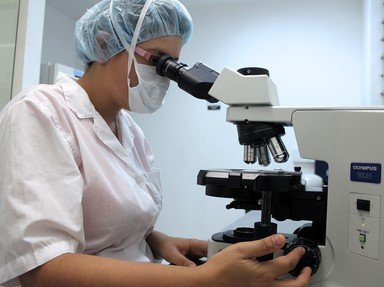Quiz Answer Key and Fun Facts
1. To start off, which phase of both mitosis and meiosis includes DNA replication from 2C to 4C? (1C is the normal DNA content in a haploid [gamete] cell, 2C in a diploid body cell.)
2. Which phase results in a change of ploidy from diploid (2n) to haploid (n)?
3. During which stage can crossing over occur?
4. Which of these options occurs during telophase (1 and 2 during meiosis, and during mitosis)?
5. If one crossing over event occurs between homologues, how many genetically different meiotic products (i.e. how many different genotypes present in the gametes) are produced?
6. As well as interphase, prophase, metaphase, anaphase, telophase, and cytokinesis, there is a stage called prometaphase.
7. In which type of cell does preprophase occur?
8. If an error occurs during mitosis, such as DNA replication occuring twice instead of once to produce 8C, or chromosome non-disjunction (during which chromosomes fail to segregate properly resulting in either one less or one extra chromosome in the defective daughter cell), cells undergo what is known as Programmed Cell Death, or PCD. Which of these is another name of PCD?
9. Sometimes a cell will leave the cell cycle and enter a phase known as the 'quiescent phase' or 'resting phase'. What is the name of this phase?
10. Chromosome non-disjunction was briefly described in another question as an error in chromosome segregation, resulting in either one less (monosomy) or one extra chromosome (trisomy) in the daughter nuclei. Which of these disorders is caused by this error?
Source: Author
reeshy
This quiz was reviewed by FunTrivia editor
crisw before going online.
Any errors found in FunTrivia content are routinely corrected through our feedback system.

